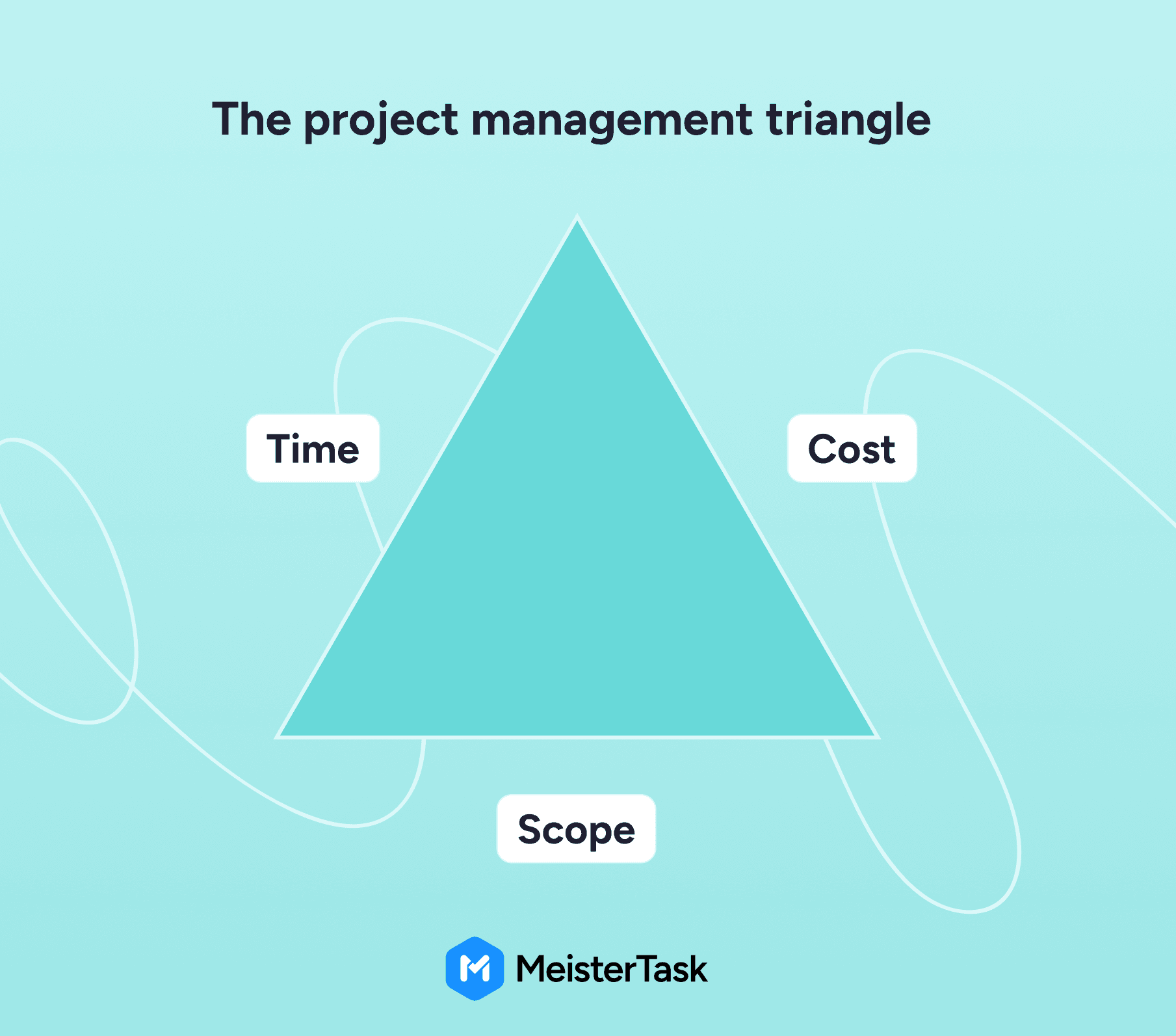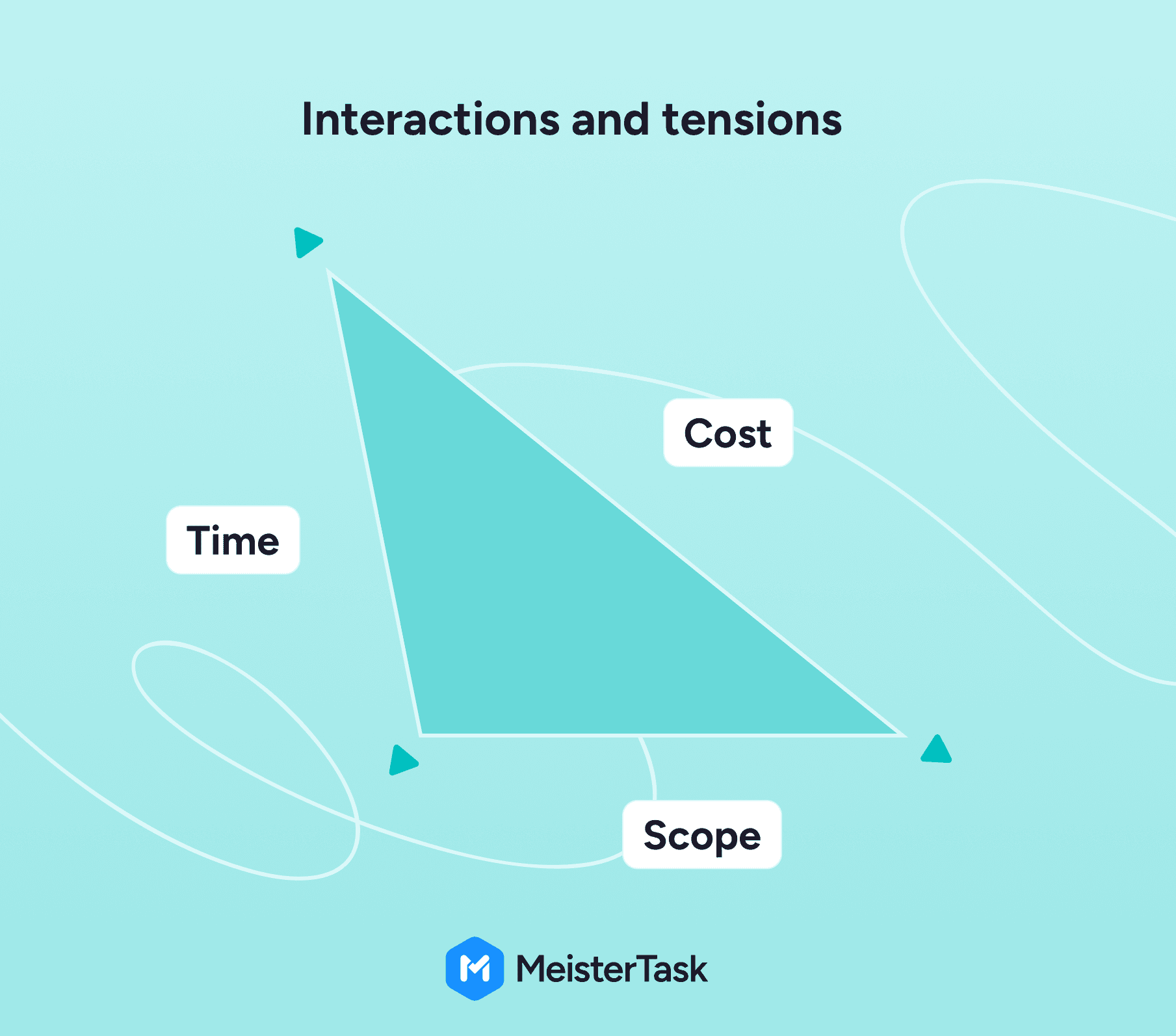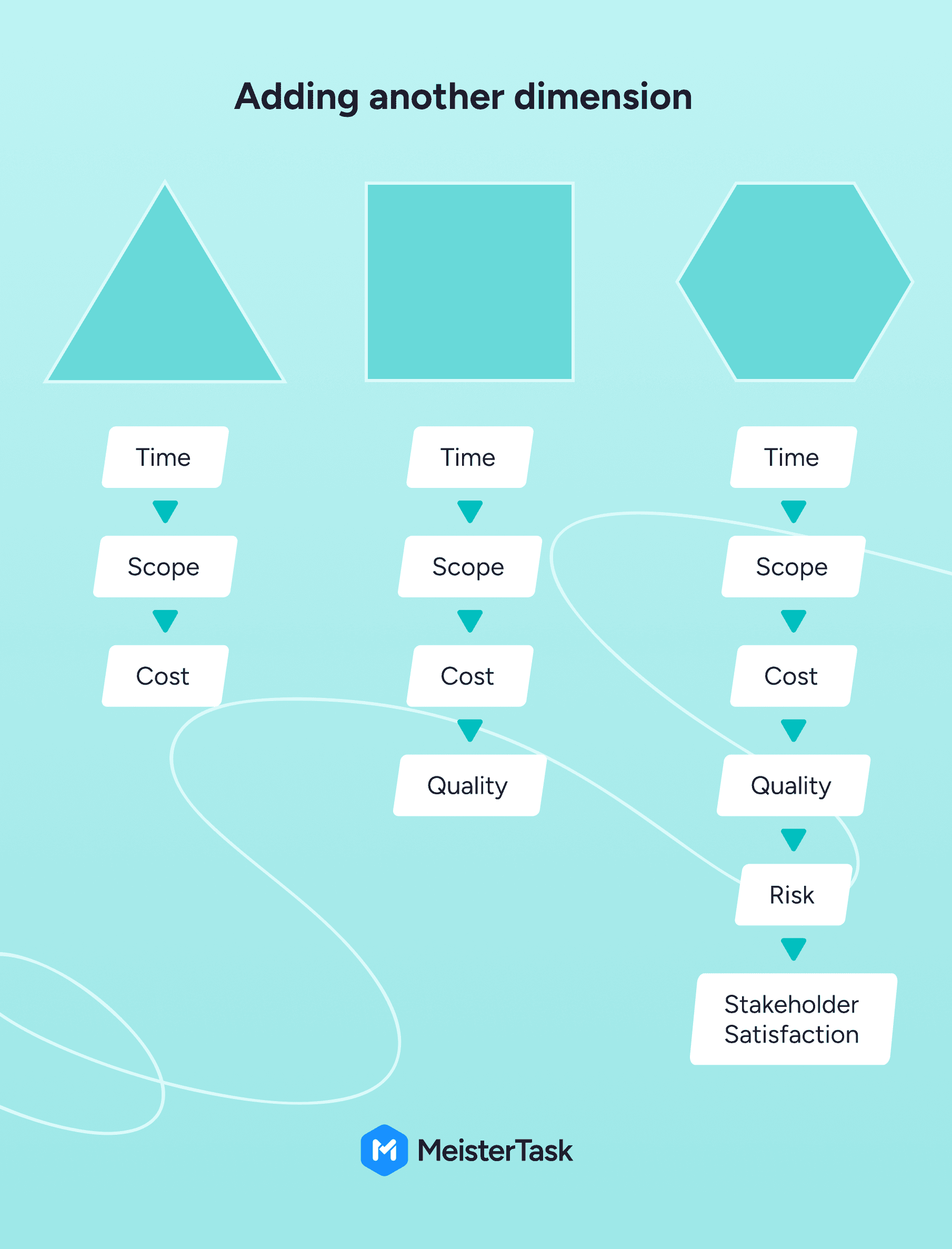The project management triangle: fundamentals and practical Use
The project management triangle is a core concept that visualizes the three most important factors in any project: time, cost and scope/quality. These dimensions determine project success but are inherently in tension — adjusting one will inevitably affect the others.
In this article, you’ll learn what the triangle is, why it is essential for modern project management, and how to apply it effectively. We’ll explore each dimension or side, examine their interdependencies, and look at common trade-offs. You’ll also see how to use this model in practice and discover extensions like the project management square.
The three sides of the project management triangle
The triangle’s sides — time, cost and scope/quality — form the foundation of many project management methods. The model illustrates how a change in one dimension impacts the others.

1. Time: deadlines, milestones and timeboxing
The time dimension covers the entire project schedule, from planning to delivery. Milestones and deadlines make progress measurable and keep the project on track. Visual scheduling tools can help by mapping the timeline in a Gantt-like view. In MeisterTask, the Timeline view displays tasks with start and due dates, as well as assignees, in a calendar-style layout — making it easy to spot bottlenecks and stay on track.
2. Cost: budget, resources and forecasting
The cost side includes the budget and efficient use of resources. The goal is to deliver within the planned financial framework. Continuous budget monitoring helps identify deviations early and take corrective action. Typical challenges include inaccurate estimates, unexpected scope changes or rising material costs. A project management tool like MeisterTask provides transparency through reports that track budget usage and ROI metrics, enabling informed decision-making.
3. Scope/ quality: deliverables, output and expectations
This dimension defines what will be delivered, in what quantity, and to what standard. Clear requirements from the outset are critical — otherwise, you risk scope creep.
Interactions and tensions
The power of the triangle lies in its interactions: change one side, and the others come under pressure. Shorten the project duration, and you may need to increase resources or reduce scope to maintain quality. Reduce the budget, and you might have to scale back features or accept a longer timeline.

Example:
Imagine a software project due to go live in six months. New feature requests emerge mid-development. If the deadline stays fixed, the team must either add developers or work overtime, increasing costs. Without a budget increase, scope or quality must be reduced — or the deadline extended.
Overcoming challenges
In reality, external factors also come into play — unclear requirements, resource shortages, or unexpected events like illness can derail timelines. To keep control, project managers need to spot risks early and take action.
Make trade-off decisions
Prioritize requirements:Use methods like MoSCoW prioritization (Must have, Should have, Could have, Won’t have) or value scoring to rank features by importance and impact. Features that are highly relevant to the project’s success are implemented first, while less critical tasks are addressed later if needed or intentionally deferred.
Plan in time and cost buffers:Unexpected events can never be ruled out entirely. That’s why you should build in time and financial reserves from the very start. Based on potential uncertainties and past experience, you can set realistic buffer amounts.
Review progress regularly:Compare your project’s current status against the original plan on a regular basis. This way, deviations in time, cost, or performance are identified early, enabling targeted corrective actions.
MeisterTask helps you get it done
A practical project management tool combines all the features you need. MeisterTask is project management software that strikes the perfect balance between structure and flexibility. The platform digitizes daily work by bringing tasks, documentation, and communication together in one central place—while remaining easy to use. Key features include:
Central Kanban boards: Provide a visual overview of all team tasks. Move tasks between columns to keep workflows transparent and easy to follow.
Templates: Kick off new projects with ready-made structures. This helps your team adopt proven methods and get up to speed faster.
MeisterTask AI: Leverage artificial intelligence to find content or create text such as blog posts and emails.
Task import: Convert emails or meeting notes into tasks in just a few clicks. Deadlines can be synced automatically with calendars.
Automations: Automate recurring steps to save time and allocate resources more efficiently.
Checklists, attachments, and tags: Define scope clearly with checklists, store relevant files directly in the task, and label items with tags for better organization.
Reports and progress tracking: Use simple analytics to keep track of project progress and business value at all times.
MeisterTask isn’t just a tool — it’s your digitalization partner. Our experts can help you apply the project management triangle effectively in your organization.
Agile perspectives: adding a fourth dimension
While the classic triangle focuses on operational factors, modern projects often consider customer satisfaction or quality as a fourth dimension or side — creating the so-called devils quadrangle. Developed by software engineer Harry Sneed, this model separates quality from scope, allowing each to vary independently. As an example: Reducing quality intentionally might allow for increased scope without impacting time or cost. The square keeps total “area” constant but allows for more nuanced trade-offs.
Further expansions like the project management hexagon add elements such as risk management, resources and stakeholder satisfaction.

Understanding and applying the project management triangle in practice
The project management triangle provides you with a clear framework for managing project goals amid the often conflicting demands of time, cost, and performance. When you apply this concept consciously, you can identify goal conflicts early on and make strategic decisions about which corner of the triangle to pull and which side you need or want to adjust.
Successful project managers understand the relationships between these factors and actively use them for planning and control. This makes it possible to calculate project duration and budget more realistically and to secure quality and customer satisfaction over the long term.
Use the project management triangle as a compass for your project planning. Regularly reflect on how well your current decisions align with the corner points of time, cost, and scope. This creates greater clarity within the project team and also strengthens your position as the responsible project manager.
